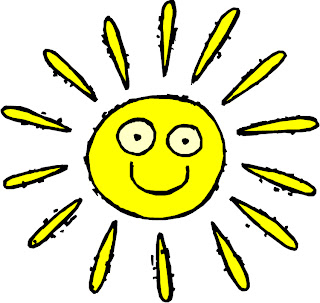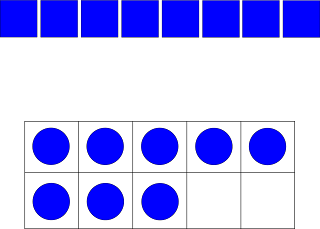Beyond the Beach!
Summer Themes for Keeping Learning Going All Summer Long
It's summertime, summertime, sum-sum-summertime!!!!! And in the summer, we see a lot of "going to the beach," "down by the ocean," and vacation-themed activities with our little people. While of course everyone can (and probably should) do a beach-related theme each summer, there is more to summer than fun in the sun and sand. Just because school's out for summer doesn't mean little brains are vacationing from learning. Learning happens all the time! Here are some ideas to keep your summer fun, interesting, and theme-based while continuing the learning:
BUBBLES
- Blowing Bubbles
- Make bubble solution (involve the children): 1 c water; 2 T light kayro syrup; 4 T dishwashing liquid; few drops food coloring (optional). Refrigerate for longer life (and let age a few days to make bubble blowing easier)
- Make bubble blowers
- poke holes in bottoms of paper cups; dip rims in bubble solution and blow through the holes
- make 1" slits on the ends of straws; bend strips back; dip the bent ends of straws into bubble solution and blow through the other end (make sure children understand the difference between blowing and sucking!)
- tape 4 to 6 straws together in a bundle for each child; dip one of the ends of the straw bundles into the bubble solution and blow through the other ends.
- Let children take turns blowing all the bubbles they can with one breath. Have the rest of the children count the bubbles. (math connection)
- Have the children blow bubbles and look at them closely. When the reflection from the sun hits the bubbles, a rainbow of colors can be seen. Ask children to look for the different colors and name the ones that they see. (science connection)
BUBBLES ALL AROUND ME
Sung to: “My Bonnie Lies Over the Ocean”
Sung to: “My Bonnie Lies Over the Ocean”
The bubbles flew over the flowers.
The bubbles flew over the trees.
The bubbles flew over the grass.
So many bubbles, I see.
The bubbles flew over the trees.
The bubbles flew over the grass.
So many bubbles, I see.
Bubbles, bubbles
As pretty as bubbles can be.
Bubbles, bubbles
Popping all around me.
Jean Warren
As pretty as bubbles can be.
Bubbles, bubbles
Popping all around me.
Jean Warren
NOTE: Add a Girl Scout twist and have the children stand up every time they hear the word "bubbles" and sit down right after. Start the song off slowly, then speed it up. HILARIOUS!
CAMPING
- Set up a Camping Center. A 3-person tent will actually fit inside a 12' x 12' room. Consider setting one up at least for a portion of the day. Tents can also be made by draping sheets or vinyl table cloths or large pieces of plastic. Other items to consider for the camping center:
- battery operated lantern
- flashlights
- pieces of wood to make a campfire
- pots and pans
- sleeping bags
- dress up clothes (boots, flannel shirts, jackets, hats, gloves, etc.)
- backpacks
- fishing pole (and pretend fishing pond or stream)
- cooler
- walking sticks
- books about nature
- maps
- CD or recording of sounds of nature
- Create a "stream" or rocky path using blue butcher paper and smooth stones
- Print materials to consider
- Eric Carle book about insects a
- hiking guides
- maps
- other "big people" books and reference materials
- Cub Scout/Girl Scout/Campfire Girls handbooks
- Nature magazine
- Books with real pictures of plants and animals
- We're Going on a Bear Hunt
- Props to make/use
- Forest mural
- Backpack
- rain ponchos (from shower curtain liners and duct tape to make seams; children can decorate with markers or stickers)
- First aid kit (with child-friendly items like band-aids)
- Binoculars (tape two toilet-paper rolls together; let children decorate)
- Trail mix for snack (can be made with or without peanuts)
- Materials for children to make their own hiking maps
FLAGS
- Choose a few flags from countries children are likely to hear about (USA, Canada, & Mexico are good starts) and help them identify them; discuss the differences in the flags and the meanings for things on the flags (like what the maple leaf signifies)
- Talk about the special days coming up this summer when flags will be seen around town like Flag Day (June 14) and 4th of July
- Have children pretend they are flags hanging on poles in the wind. Play a version of Simon Says (wave like there is a gentle breeze; wave like you are in a storm; there is no wind)
- Make flags by stapling paper on straws (could be child-made or teacher made flags) and do flag parades (use a John Phillip Sousa march to help you out like "Stars and Stripes Forever")
- Using flags can also help you with transitions -- If you have an American Flag, please go wash your hands/line up/etc. Follow with other flags to help decrease time waiting in line.
- Set up a flag making station in the art center. Encourage children to make their own flags that represent them just like each country has a flag that represents that country.
- Flag match ups
- Print a variety of flags out (go to google images to find pictures of flags in a nice, user-friendly size; you can copy and paste flags into a MSWord document....print 2 of each flag)
- Attach each flag to 3x5 card
- Mix up the cards and let the children take turns finding the matching pairs of flags
- A great website to find out information and images for every country's flag is Flags of the World (be sure your pop-up blocker is turned off)
- Do a flag ceremony -- Click Here for detailed Girl Scout flag ceremony ideas AND excellent historical and etiquette information for how to handle and retire American Flags (has great facts for grown ups about our flag!)
THE SUN
- Make sun puppets -- Let children use yellow construction paper, yellow yarn, and a craft stick and with your help create a little sun puppet (children decorate 2 pieces of yellow construction paper circles and glue yarn on; help children glue circles together with the craft stick in between as a handle). Children can use their sun puppets during songs or stories related tot he sun.
- Sun prints -- Set dark colored construction paper in direct sunlight. Have children place objects on the paper. At the end of the day, have children remove the objects and report on what has happened.Talk with them about why this might have happened.
- Read the book "Sun Up, Sun Down" by Gail Gibbons
- Make a Sunshine Shake -- combine 6oz unsweetened frozen orange juice concentrate; 3/4 c milk; 3/4 c water; 1 tsp vanilla; 6 ice cubes in blender and blend (makes 4 servings)
- Discuss the important ways we need to protect ourselves from the sun (sunscreen, sunglasses, hats, hydration, don't look directly at the sun, etc.)
- Talk about the helpful qualities of the sun
- Look at real pictures of the sun (google images is a great resource for this as well)
- Focus on the color yellow and the shape of a circle. Talk about whether or not the real pictures of the sun are yellow/circle
WHALES
- Make paper bag whales
- Have children stuff paper bags with crumpled sheets of newspaper. Have different sized paper bags available. Tie tops of bags closed to make whale talks. Let children paint bags to represent whales. Add eyes with construction paper or markers (after paint dries). Using different colors of paints and different sized bags as well as allowing children to choose how full to stuff their bags will help with process vs product issues.
- Whales matching/counting/file folder game
- Cut whale shapes and whale spout shapes out of different colors. Use contact paper to laminate (if you don't have access to a laminator). Put whales contact papered/laminated on the inside of a file folder. Laminate spouts; cut out; place in zip top bag. Children can match the spouts to the whales to practice color matching.
- Listen to humpback whale sounds. Encourage children to mimic the sounds. Ask children to listen carefully and try to repeat the whale song they heard. A great video of a humpback whale song can be found here.
- National Geographic Kids has excellent information about a variety of whales. Click here for info about Blue Whales.
- Discuss the differences between whales and fish (whales are mammals, breath air, live births, etc.).
- Incorporate whale movement in your water play activities.
- Make a giant mural of the ocean and add the paper bag whales to it.
NOTE: Several ideas were generated from the books Theme-asaurus I & Theme-asaurus II edited by Jean Warren.
Blog entry by Dr. Ellaine B. Miller, PhD. Family Child Care Partnerships at Auburn University. www.humsci.auburn.edu/fccp






















